What is happening in your car?
There are several functions in your car that can contribute actively to increasing safety in traffic, both for yourself and other road users. To avoid being surprised if any of the functions are activated, there is the option here for you to see an overview of the different functions and how they may act in a critical situation. If a function should be activated, you can also be informed of this via a text message in the driver display.
Note
You can be alerted by symbols, acoustic signals, visual signals or vibration
The safety functions in your Volvo can alert you in different ways. For example, with vibration in the steering wheel, brake pulse warnings, with visual or acoustic signals or via symbols in the driver display. Below you can read about the safety functions and how they can alert you.
Alerts can also be shown in the head-up display*.
Blind Spot Information (BLIS)*

BLIS is designed to give a warning of rapidly approaching vehicles as well as vehicles diagonally behind and to the side of your vehicle so as to give you assistance in heavy traffic on roads with several lanes in the same direction.
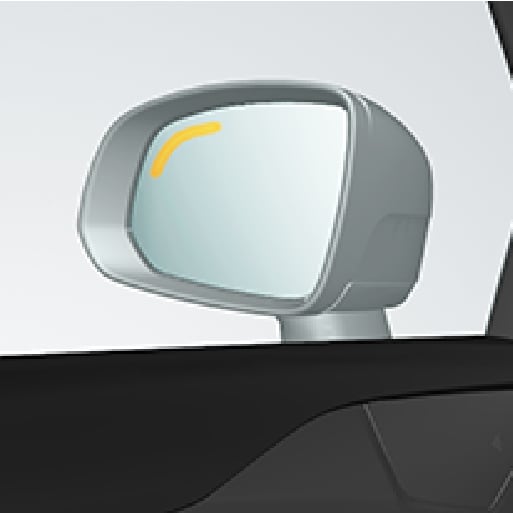
BLIS alerts with an indicator lamp in the side mirror, with fixed glow and flashing light.
City Safety™

City Safety is a function that can prevent or mitigate a collision with pedestrians, cyclists, larger animals or vehicles. Visual, acoustic and brake pulse warnings are given in the event of a risk of collision to help the driver act in time. If the driver does not react to the warning and the risk of collision is assessed as imminent then City Safety can automatically brake the car.
- Brake pulse warnings, visual and acoustic signals.
- The car brakes in certain situations if the driver does not react him/herself within a reasonable amount of time.
Cross Traffic Alert (CTA)*

CTA is a function designed to alert for crossing traffic when the car is being reversed.
- Acoustic signal from left or right speaker depending on the direction from which the object is approaching.
- Icon in the driver display.
- Icon in park assist camera top view.
Distance Warning*1
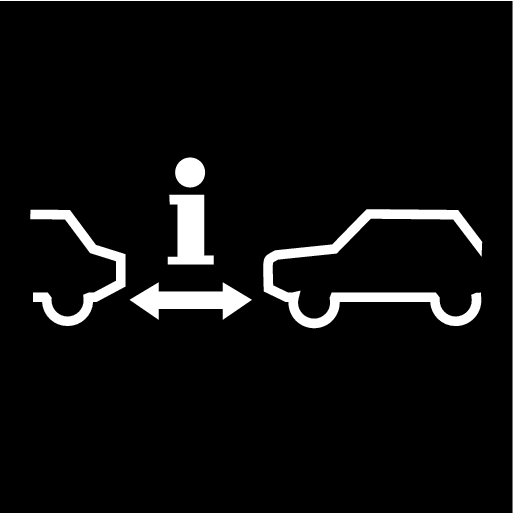
Distance Warning can alert you if the time interval to the vehicle ahead suddenly becomes too short.
- If the distance to the vehicle ahead becomes too short according to the preset value, a warning light and/or a symbol is shown in the windscreen. For the car to include the function, it must be equipped with a head-up display*.
Driver Alert Control (DAC)

DAC is intended to attract the driver's attention if he or she is starting to drive less consistently, e.g. if the driver becomes distracted or starts to fall asleep.
- Acoustic signal combined with a symbol in the driver display and the message Time for a break soon?.
Lane Keeping Aid (LKA2)
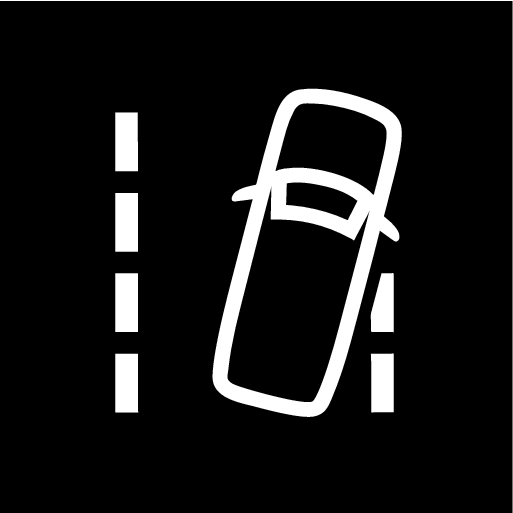
Lane assistance can help you to reduce the risk of the car unintentionally leaving its own lane. Since you have the option to choose the setting for how the function should assist you, your experience of the safety function may vary.
- Steering assistance: If the function detects that the car is approaching a lane line, you will feel a gentle steering action applied to the steering wheel. Remember that you must have both hands on the steering wheel for the function to work.
- Warning: If the function detects that the car is approaching a lane line, you will be alerted by vibration in the steering wheel.
- Both: You are alerted with vibration and a gentle steering action applied to the steering wheel.
Steering assistance at risk of collision
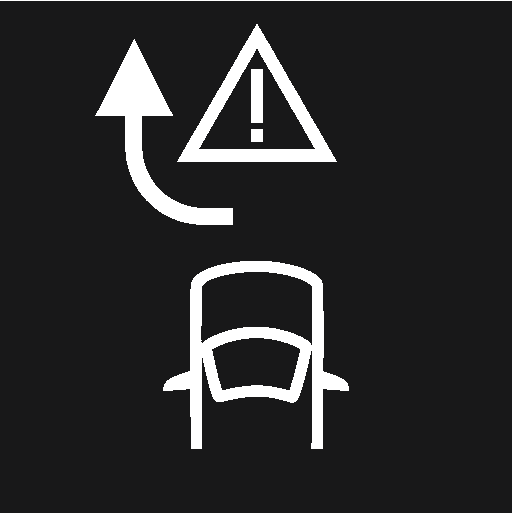
The function for collision avoidance assistance can help you reduce the risk of the car unintentionally leaving its lane and/or colliding with another vehicle or obstacle. The function can assist you by helping to steer the car back into its own lane and/or steer aside.
When you start the function, three subfunctions are activated which can help in different situations. Your experience of the function may therefore differ slightly depending on which of the subfunctions is activated.
- Steering assist with run-off mitigation: If the camera detects that the car is about to cross the edge of the road, you may feel that the function is attempting to steer the car back into its own lane. If the steering intervention is assessed as insufficient, the function will also attempt to brake the car. There will be no steering or brake intervention if you have activated the direction indicators, and if the function assesses that the car is being driven actively by you as the driver, activation of the function will be held back.
- Steering assist with head-on collision mitigation: If the car is about to leave its own lane while an oncoming vehicle is approaching at the same time, the function can help you as the driver to steer the car back into its own lane by means of steering intervention. There will be no steering or brake intervention if you have activated the direction indicators, and if the function assesses that the car is being driven actively by you as the driver, activation of the function will be held back.
- Steering assist with rear-end collision mitigation: If the car is about to leave its own lane while another vehicle is diagonally behind, in the blind spot or is approaching rapidly from behind, the function can help you to steer the car back into its own lane. Even if the direction indicators are activated and you actively steer the vehicle, the function can assist with steering intervention.
Rear Collision Warning (RCW)
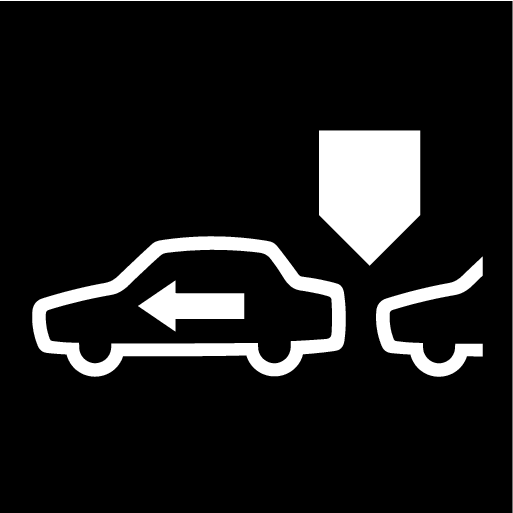
RCW is a system that can help you avoid being hit by a vehicle approaching from behind. If the system detects a risk of rear-end collision, it can give a warning and take the following action, depending on the conditions:
- Intensive flashing with the direction indicators.
- At low speeds RCW can tension the seatbelts by activating the seatbelt tensioners, and activate the Whiplash Protection System.
- If the car is stationary, the foot brake can be activated.
Whiplash Protection System (WHIPS)
WHIPS is a function that can protect against whiplash injuries. The system consists of energy absorbing backrests and seat cushion, as well as a specially designed head restraint in the front seats.
Warning
The functions described are supplementary aids - they cannot handle all situations in all conditions.
The driver always bears responsibility that the vehicle is driven safely and that applicable road traffic rules and regulations are followed.